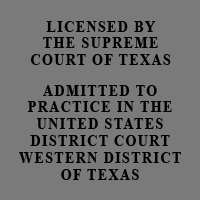Stevens-Johnson Syndrome Lawyer Handles Fatal Drug Reaction Lawsuits and Deadly Medication Reaction Lawsuits by Texas Stevens-Johnson Syndrome Lawyer and Fatal Drug Reaction Lawyer Jason S. Coomer
Stevens–Johnson Syndrome and Toxic Epidermal Necrolysis are forms of a very rare, acute, serious, and potentially fatal skin reaction. The skin condition is usually, possibly always, caused by medications. If you believe that you or someone that you love has Stevens–Johnson Syndrome and/or Toxic Epidermal Necrolysis, it is crucial to immediately seek medical attention. If you believe a drug reaction or medical malpractice caused Stevens–Johnson Syndrome (SJS) or Toxic Epidermal Necrolysis (TEN), please feel free to contact Stevens-Johnson Syndrome Lawyer and Toxic Epidermal Necrolysis Lawyer Jason S. Coomer for a free review of your Stevens–Johnson Syndrome Lawsuit or Toxic Epidermal Necrolysis Lawsuit or feel free to use our online submission form.
Stevens-Johnson Syndrome Lawyer, Toxic Epidermal Necrolysis Lawyer, SJS-TEN Lawyer, Fatal Skin Drug Reaction Lawyer, and Deadly Skin Medication Reaction Lawyer
Stevens–Johnson Syndrome (SJS) and Toxic Epidermal Necrolysis (TEN) are two forms of a life-threatening condition affecting the skin in which cell death causes the epidermis to separate from the dermis. With this condition a person's skin and mucous membranes react severely to a medication or infection. Often, Stevens-Johnson syndrome begins with flu-like symptoms, followed by a painful red or purplish rash that spreads and blisters, eventually causes the top layer of a person's skin to die and shed. The syndrome is thought to be a hypersensitivity complex affecting the skin and the mucous membranes. Persons with Stevens-Johnson syndrome (SJS) should seek immediate medical treatment.
Medications are thought to be the most common cause of Stevens-Johnson Syndrome and Toxic Epidermal Necrolysis. More than 200 medications have been reported in association with SJS/TEN. It is more often seen with drugs with long half-lives compared to even a chemically similar related drug with a short half-life. A half-life of a medication is the time that half of the delivered dose remains circulating in the body. The most commonly implicated medications are antibacterial sulfonamides. Other drugs that have been associated with Stevens-Johnson Syndrome include: Anti-gout Medications; Non Sterodal Anti-Inflammatory Drugs (NSAIDs); Sulfonamides; Penicillins; Ibuprofen (Advil, Children's Advil, Motrin, Children's Motrin, Advil Allergy Sinus Tablets; Advil Cold & Sinus Tablets; Advil Liqui-Gels; Advil Migraine Capsules; Children's Motrin Chewable Tablets; Motrin Junior Strength Chewable Tablets; Motrin Cold & Sinus Tablets; Motrin IB Tablets; Motrin Infants' Drops, and Nuprin); Ketek; Antibiotic; COX-2 inhibitors Bextra (Valdecoxib); Vioxx (Rofecoxib); Celebrex (Celecoxib); Barbiturates; Sedatives; Feldene (Piroxicam); Naproxen (Aleve); Antibiotic Medications; Zithromax (also known as a z-pack); Keflex (cephalexin); Coreg (carvedilol) (a popular beta blocker); Tolectin; Antifungals; Antivirals; and Anticonvulsants.
Medical Malpractice Stevens-Johnson Syndrome Lawyer, Failure to Diagnose Toxic Epidermal Necrolysis Lawyer, Medical Mistake SJS Lawyer, TEN Lawyer, Medical Malpractice Fatal Skin Drug Reaction Lawyer, and Medical Malpractice Deadly Skin Medication Reaction Lawyer
When diagnosing and treating a person with Stevens–Johnson Syndrome (SJS) and Toxic Epidermal Necrolysis (TEN), it is important to identify the condition early and discontinue the medications that may be causing the skin reaction. In identifying and diagnosing Stevens–Johnson Syndrome (SJS) and Toxic Epidermal Necrolysis (TEN), it is also important to determine what medications the patient has been taking and if prior to the rash appearing, the patient suffered from a flu-like illness resembling an upper respiratory tract infection with fever, cough, sore throat, difficulty swallowing, runny nose, sore red eyes, conjunctivitis, as well as general aches and pains.
After the flu-like symptoms, there is typically an abrupt onset of a tender/painful red skin rash starting on the trunk and extending rapidly over hours to days onto the face and limbs. These skin lesions typically include changes in surface color, target lesions, and blisters. The changes in surface color are typically flat, red and diffuse (measles-like) or purple (purpuric) spots. The target lesions or erythema multiforme consists of a polymorphous eruption of macules, papules, and characteristic “target” lesions that are symmetrically distributed with a propensity for the distal extremities. The blisters are typically flaccid, that begin to merge to form sheets of skin detachment, exposing red, oozing dermis. These blisters are positive for the Nikolsky sign which means if the blisters are rubbed gently skin will exfoliation the outermost layer. Nikolsky's sign is almost always present in TEN.
Developing Stevens–Johnson Syndrome (SJS) or Toxic Epidermal Necrolysis (TEN) constitutes a dermatological emergency and failure to timely act can result in a more severe reaction or even death. When a person has Stevens–Johnson Syndrome (SJS) or Toxic Epidermal Necrolysis (TEN), immediate treatment should be sought and all medications should be discontinued, particularly those known to cause SJS-TEN reactions.
A skin biopsy or autopsy is usually required to confirm the clinical diagnosis and to exclude Staphylococcal Scalded Skin Syndrome (SSSS) and other generalised rashes with blisters.
Stevens-Johnson Syndrome Lawyer, Toxic Epidermal Necrolysis Lawyer, SJS Lawyer, TEN Lawyer, Fatal Skin Drug Reaction Lawyer, and Deadly Skin Medication Reaction Lawyer
Stevens–Johnson Syndrome (SJS) and Toxic Epidermal Necrolysis (TEN) are variants of the same skin condition. The condition presents as severe mucosal erosions with widespread skin lesions. In Stevens–Johnson Syndrome (SJS), epidermal detachment involves less than 10 percent of the total body skin area; transitional Stevens–Johnson Syndrome (SJS)-Toxic Epidermal Necrolysis (TEN) is defined by an epidermal detachment between 10 percent and 30 percent; Toxic Epidermal Necrolysis (TEN) is defined by a detachment greater than 30 percent.
Skin reactions during SJS-TEN can be horrific and death from or suffering from the condition either Stevens–Johnson Syndrome or Toxic Epidermal Necrolysis can be a horrific experience for everyone involved. To help the patient recover it is essential Even worse
Severe skin adverse drug reactions can result in death. Toxic epidermal necrolysis (TEN) has the highest mortality (30-35%); Stevens-Johnson syndrome and transitional forms correspond to the same syndrome, but with less extensive skin detachment and a lower mortality (5-15%). Hypersensitivity syndrome, sometimes called Drug Reaction with Eosinophilia and Systemic Symptoms (DRESS), has a mortality rate evaluated at about 10%.
Federal Stevens-Johnson Syndrome Lawyers, Illinois Toxic Epidermal Necrolysis Lawyers, Chicago SJS Lawyers, TEN Medical Malpractice Lawyers, Illinois Fatal Skin Drug Reaction Lawyers, and Illinois Deadly Skin Medication Reaction Lawyers
As a Texas Stevens-Johnson Syndrome Lawyer and Toxic Epidermal Necrolysis Lawyer, Jason Coomer works with Stevens-Johnson Syndrome medical malpractice lawyers, Illinois Stevens-Johnson Syndrome lawyers, Illinois Toxic Epidermal Necrolysis Lawyers, Chicago SJS-TEN lawyers, Chicago Drug Skin Reaction Lawyers, Illinois Skin Condition lawyers, failed SJS-TEN diagnosis lawyers, and other Stevens-Johnson Syndrome Lawyers throughout the United States to seek compensation from negligent doctors, companies manufacturing defective products, and negligent health care providers that have severely injured or killed patients through medical mistakes and medical carelessness as well as defective drugs.
Stevens-Johnson Syndrome Lawyer, Toxic Epidermal Necrolysis Lawyer, SJS Lawyer, TEN Lawyer, Fatal Drug Reaction Lawyer, and Deadly Medication Reaction Lawyer (Stevens-Johnson Syndrome Lawsuits, Toxic Epidermal Necrolysis Lawsuits, and Fatal Drug Reaction Lawsuits)
Stevens–Johnson syndrome (SJS) and toxic epidermal necrolysis (TEN) are two forms of a life-threatening condition affecting the skin in which cell death causes the epidermis to separate from the dermis. The syndrome is thought to be a hypersensitivity complex affecting the skin and the mucous membranes. The main causes are thought to be medications and infections. If you believe that you or someone that you love has Stevens–Johnson syndrome (SJS) or toxic epidermal necrolysis (TEN), it is crucial to immediately seek medical attention. If you believe a drug combination or medical malpractice caused Stevens–Johnson syndrome (SJS) or toxic epidermal necrolysis (TEN), please feel free to contact Stevens-Johnson Syndrome Lawyer and Toxic Epidermal Necrolysis Lawyer Jason Coomer for a free review of your Stevens–Johnson Syndrome Lawsuit or Toxic Epidermal Necrolysis Lawsuit use our online submission form.
Feel Free to Contact Us with any Questions
Associations




